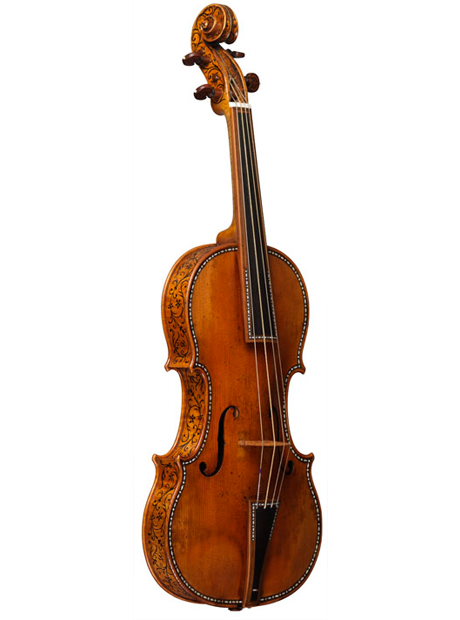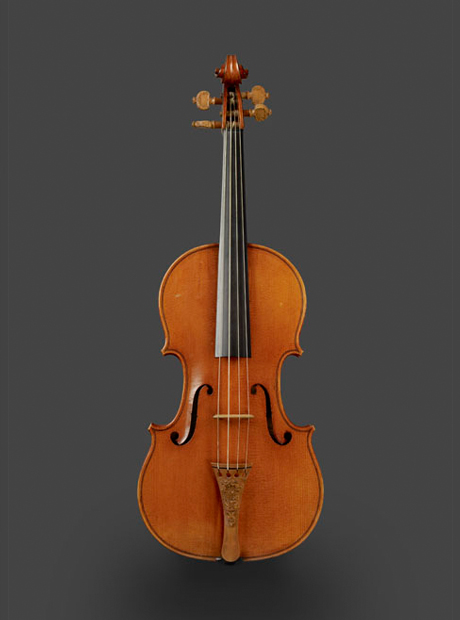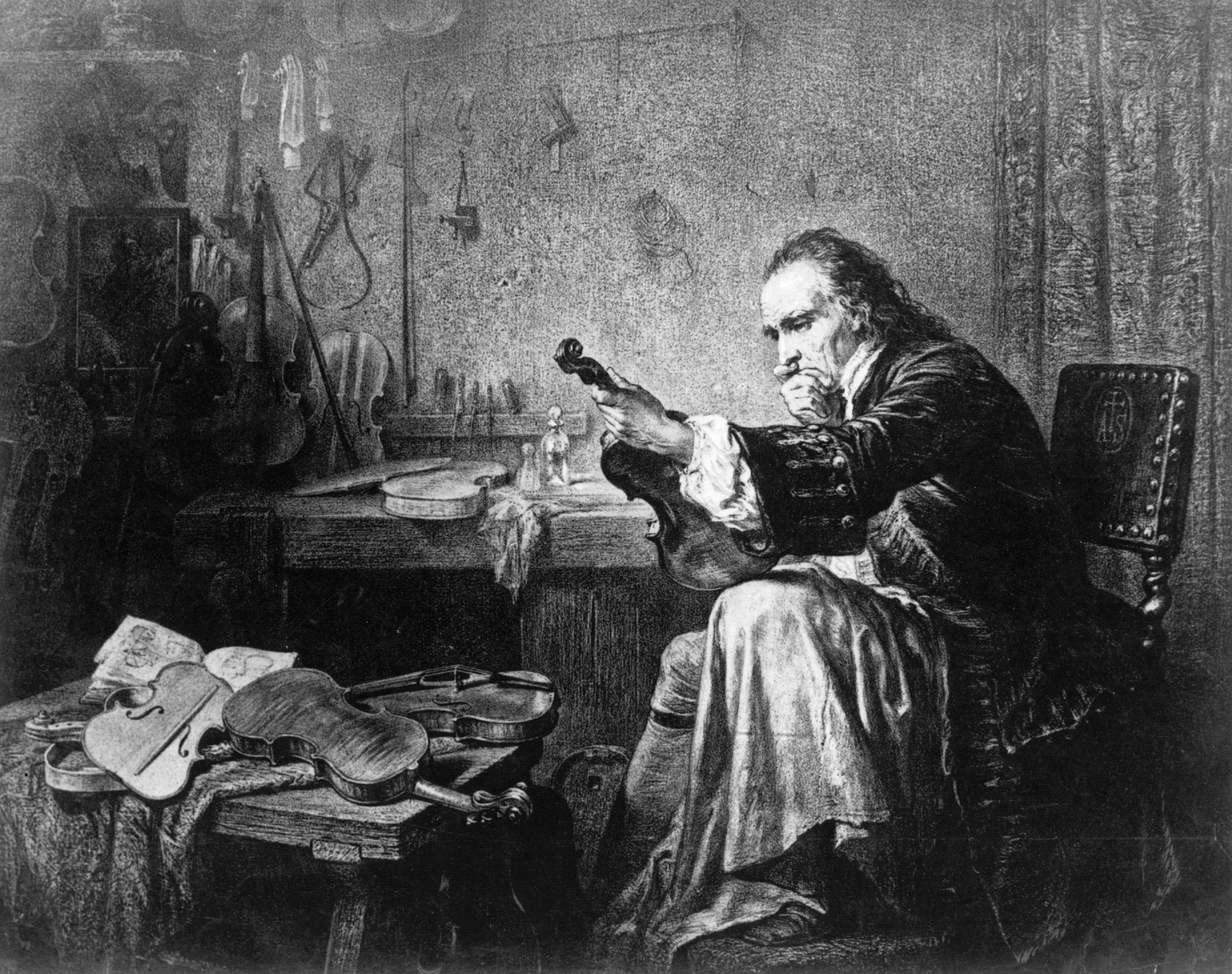The size of the ‘f’ holes
A new study by academics at MIT have suggested the secret to the Stradivari sound is the size of the ‘f’ holes on the front of his violins. The more elongated these holes, the more sound an instrument can produce. Stradivari made the ‘f’ holes longer and narrower than in previous instruments:
image: https://classicaldaily.com/wp-content/uploads/2015/02/stradivarius-f-holes-1423653672.jpg

Image courtesy of MIT researchers
The shape
Stradivari experimented with different shapes for his violins – even making some which were much longer. And here’s the beautiful Cipriani Potter violin in all its glory to demonstrate:
image: https://classicaldaily.com/wp-content/uploads/2015/02/the-cipriani-potter-1371724474.jpg

Varnish
Much has been written about the varnish the great luthier used, analysis has even come up with the exact recipe – a mixture of oil, oil-resin and in some cases a red pigment.
Beautiful designs
The famous ‘Messiah’ Strad has an intricate carving on its tailpiece. Ok, so it might not directly contribute to the sound, but it does look amazing.
image: https://classicaldaily.com/wp-content/uploads/2015/02/the-messiah-stradivarius-1371725206.jpg

Reduced solar activity in the 17th century
No really. In a 2003 study scientists in Columbia and Tennessee said that the colder winters and summers of the 17th century, when Stradivari was working, could have led to slower tree growth. In turn this would have meant Stradivari and his fellow instrument-makers were working with denser wood.
A mystery ingredient?
There have been suggestions that Stradivari and his fellow Cremona-based instrument makers might have added a mystery ingredient to the wood they used – and even that they may have used wood form ancient churches, giving their instruments an inimitable sound.
Good old fashioned genius
While people debate the exact dimensions, ingredients and design that helped make a Stradivari violin one of the best – if not the best – in the world, there’s one thing we can be sure of: this man was behind it. And he was almost certainly a genius.
image: https://classicaldaily.com/wp-content/uploads/2015/02/antonio-stradivari-1423654876.jpg

Credit: Getty, Rischgitz / Stringer
‘Imperfections’
One study has claimed that Stradivarius violins are far from perfect. In fact, physicist Dr Franco Zanini argued that what makes a Strad a Strad is its tiny imperfections. Dr Zanini put a number of instruments into a particle accelerator to look beneath the layers of varnish. Speaking to The Telegraph he said: “We noticed there were a lot of asymmetries in the instruments. In principle they have no reason to be there, but it is possible these imperfections were made to remove the unpleasant harmonics that you get in symmetrical instruments.”
Not to forget: Some of the best players in the world
One of the main reasons Stradivari violins sound amazing is that they are played by the very best musicians in the world. Here’s violinist James Ehnes playing one of Stradivari’s great violins – the 1715 ‘Marsick’ .

Share it people